CR's Best Digital Cameras Circa Y2K
A look back at the point-and-shoot cameras of 1998 and 1999 and how to shop for vintage models today
When you shop through retailer links on our site, we may earn affiliate commissions. 100% of the fees we collect are used to support our nonprofit mission. Learn more.
In the November 1998 issue of Consumer Reports, a feature story about newfangled digital cameras was sandwiched in between a review of the rebooted Volkswagen Beetle and advice on how to buy a VCR—two wildly popular products in the late ’90s that are no longer in production today. (Although I’d start a petition to bring back the Beetle.)
The digital camera has managed to resist obsolescence despite constant improvements in smartphone cameras. Gen Z’s obsession with Y2K has moved beyond fashion and is even fueling a comeback for point-and-shoot cameras. On TikTok, the hashtag #DigitalCamera has over 300 million views, with creators sharing digicam images and the camera they snapped them with. Not any digital camera will do, though. What’s favored are vintage models from the late 1990s and early 2000s with blurry, pixelated images and no WiFi capabilities. For the real, low-quality deal, they’re shopping secondhand, checking in their grandparents’ attics, and looking online.
Shopping for a Vintage Digital Camera Today
It helps to know exactly what you’re searching for, so here’s a reproduction of CR’s original digital camera ratings from 1998 and 1999. You can search for exact makes and models online, but don’t ignore the models that didn’t rank high. What CR downgraded back then—poor print quality, long next-shot delay, and a short flash range—might be considered features today if the ideal is interesting lo-fi images and not picture quality.


Finding models that actually work and are compatible with modern computers is a bit more challenging. I purchased five models from the chart above to see what I’d get in the hopes that my experience will help you shop smarter. In the end, I was able to download images from two of the cameras.
Here are three factors to consider when shopping for a vintage camera.
1. Get a Guarantee That It Works
Whether you’re buying on eBay or Etsy, or at a used-electronics shop, make sure the seller confirms that the camera shoots images and the screen works.
Case in point: I bought a Panasonic PV-DC1580 on eBay for $75, and while it powers on and takes pictures, the screen doesn’t work, so I can’t format the memory card, change menu settings, or extract images. Fortunately, the seller accepts returns—something you should also look for.
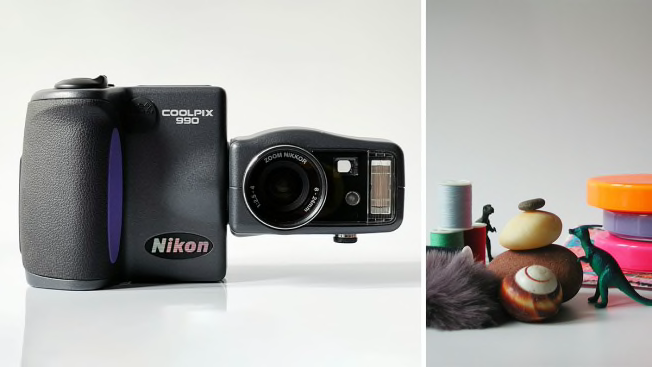
Photo: Perry Santanachote/Consumer Reports Photo: Perry Santanachote/Consumer Reports
You might not even get what you bought. I purchased a Nikon Coolpix 950 from a used online electronics shop that refurbishes the gear they sell. I figured the extra care might be worth the steeper $160 price. They sent me a Coolpix 990 by accident. Because the exchange is taking some time, and deadlines exist, I went ahead and toyed with this model, which was the successor to the Coolpix 950 in 2000. Even with the split-body design, the 2-megapixel Nikon was the most intuitive to use of the cameras I got. The images look soft and dreamy, and the lens can rotate 360 degrees. The Nikon 900 series is like the original selfie cam.
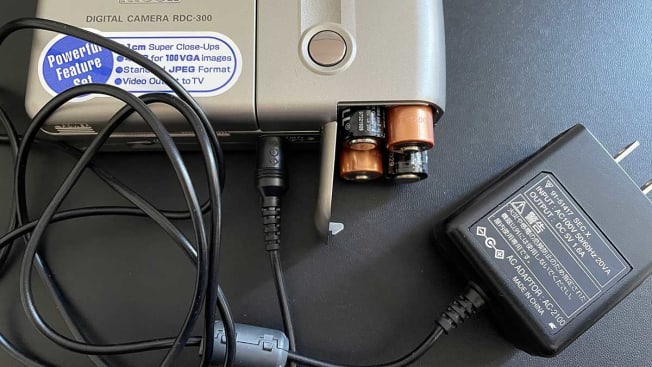
Photo: Perry Santanachote/Consumer Reports Photo: Perry Santanachote/Consumer Reports
2. Power: AA Batteries
Most of the digital cameras in CR’s 1998 and 1999 ratings were powered by AA batteries, which is a good thing because a 25-year-old rechargeable battery would likely be DOA, and finding a working replacement would be near impossible. Many of the cameras in the chart above also came with a power adapter so you could plug and play (just not too far from the wall).
Pro tip: Before buying a camera, find its manual online and check to see if the seller is including some or all the accessories.
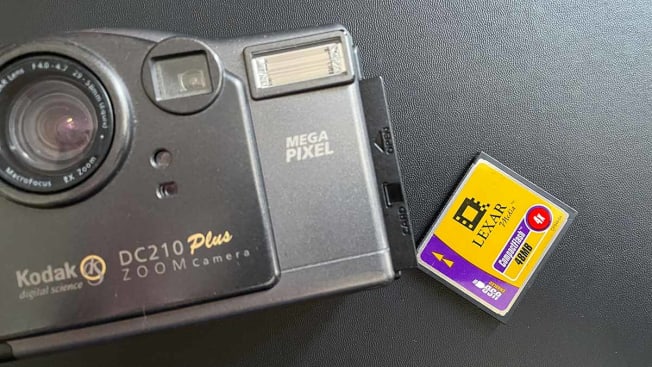
Photo: Perry Santanachote/Consumer Reports Photo: Perry Santanachote/Consumer Reports
3. Memory: CompactFlash Drive
Digital imaging was like the Wild West in the ’90s when it came to storage formats, cable connections, and image transfer software. Every manufacturer had its own thing going on, and most of it won’t work with a modern computer now. Check to make sure the camera comes with an equally old CompactFlash card, which is relatively easy to work with today. (Newer ones might not work with old cameras.) You’ll need a CF card reader. I got this one for $15 on Amazon.
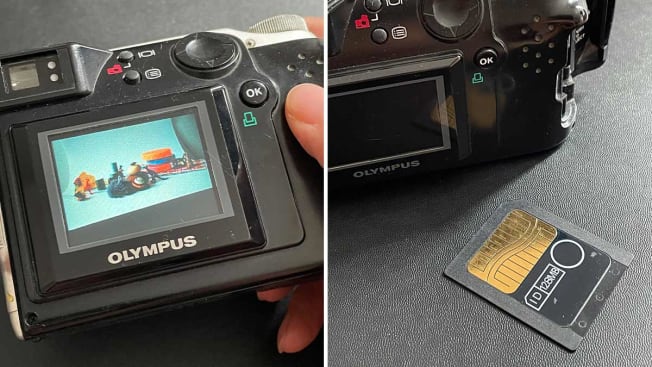
Photo: Perry Santanachote/Consumer Reports Photo: Perry Santanachote/Consumer Reports
Case in point: The Olympus C-2000 Zoom I bought on eBay for $20 has a mini floppy card called SmartMedia that I have never seen before, and because the camera didn’t come with any of its original connector cables, there’s no way to extract the images directly from the camera onto a computer. According to the manual, I could find a floppy disk adapter (I would also need an external floppy disk drive), but that was getting too complicated for this project.
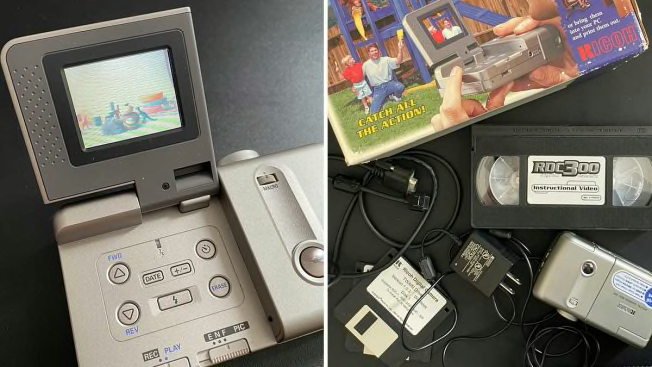
Photo: Perry Santanachote/Consumer Reports Photo: Perry Santanachote/Consumer Reports
Another case in point: The Ricoh RDC-300Z I bought on eBay for $79 stores images locally on the camera. The only way to download the images is via its original connector cable (which was included) and the camera’s driver (which was on a floppy disk). To attempt to make this setup work today, I would need a serial cable adapter and a floppy disk reader. And even then, who knows if the program would load.
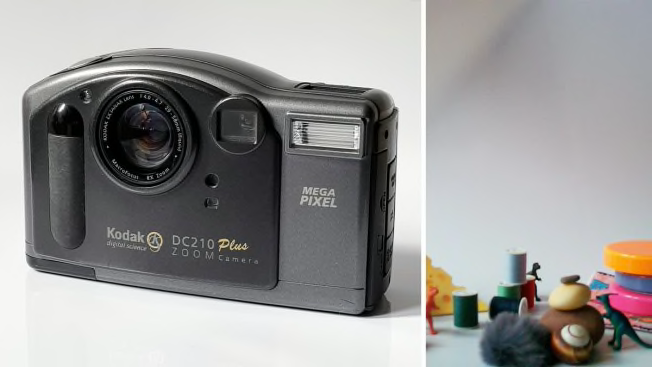
Photo: Perry Santanachote/Consumer Reports Photo: Perry Santanachote/Consumer Reports
I was able to download images from this Kodak Digital Science DC210 1-megapixel camera, which I got on eBay for $25. The CompactFlash card made it easy. The viewfinder’s framing accuracy is way off, and the 12-second lag time between shots is comical, but the dark, blurry images and “Saved by the Bell”-esque font on the menu pages are perfection for the purposes of this story.
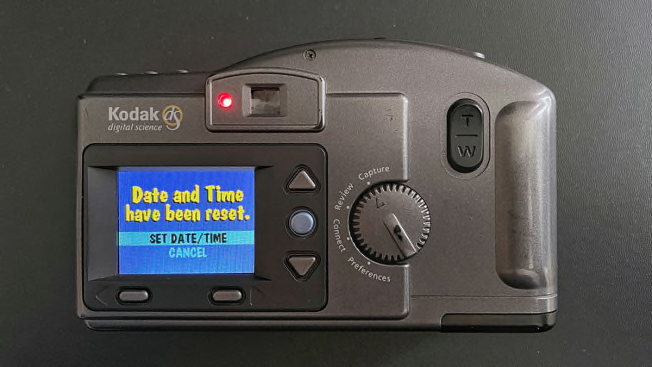
Photo: Perry Santanachote/Consumer Reports Photo: Perry Santanachote/Consumer Reports




























